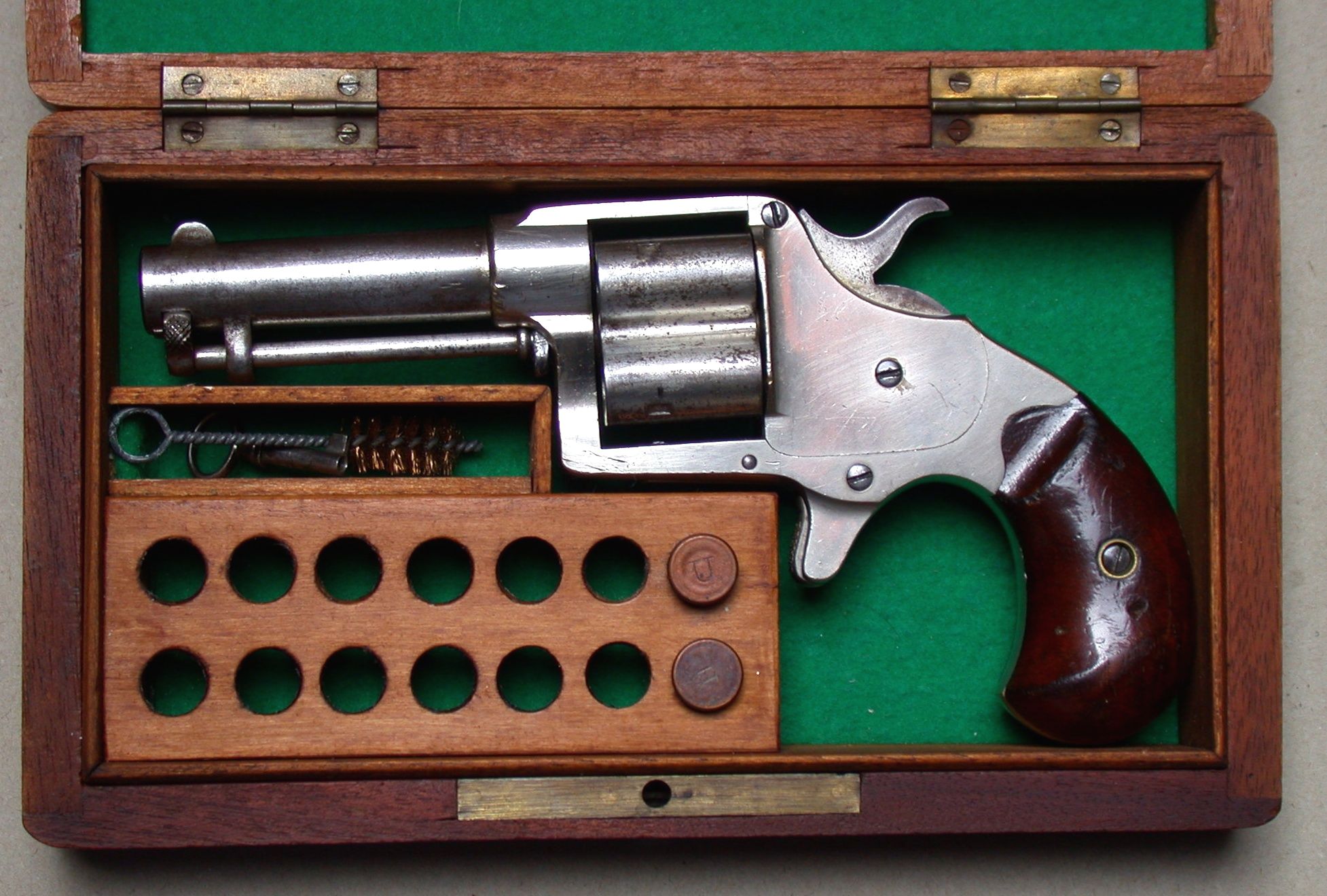Colt House Revolver on:
[Wikipedia]
[Google]
[Amazon]

 The Colt House Revolver (also called, in its alternate 4-round capacity model, the Cloverleaf) was one of the first
The Colt House Revolver (also called, in its alternate 4-round capacity model, the Cloverleaf) was one of the first
metallic cartridge
A cartridge, also known as a round, is a type of pre-assembled firearm ammunition packaging a projectile (bullet, shot, or slug), a propellant substance ( smokeless powder, black powder substitute, or black powder) and an ignition device ( pr ...
rear-loading revolver
A revolver is a repeating handgun with at least one barrel and a revolving cylinder containing multiple chambers (each holding a single cartridge) for firing. Because most revolver models hold six cartridges before needing to be reloaded, ...
s to be produced by the Colt's Patent Fire Arms Manufacturing Company, in 1871. The same year, Colt's also patented the Colt Open Top, another metallic cartridge rear-loader, but in fact the Open Top production didn't start until 1872, although a pocket version of the Open Top, a completely different design, went on sales as of 1871, the Colt Open Top Pocket Model Revolver.
The Colt House Revolver was manufactured from 1871 to 1876 in two different models: the Colt House Model itself and the Colt Cloverleaf Model, the latter being the most produced of both. The House Model is also known among collectors as the Jim Fisk model or the Jim Fisk pistol, since it attained the infamy of being the gun used in the murder of James Fisk in January 1872.
Anatomy and specifications
Both models, House and Cloverleaf, were built around a solid hidden spur-trigger frame, a weapon architecture also used by another Colt gun, the Colt Sidehammer (1855). The Sidehammer had a flat-ended grip, while the House and Cloverleaf models had all of them a recognizable "bird's-head" grip. These features (spur trigger, "birds-head" grips, etc.) were common on many small pistols and revolvers during that era, such as the classic 2-shot "derringer
A derringer or deringer is a small handgun that is neither a revolver, semi-automatic pistol, nor machine pistol. It is not to be confused with mini-revolvers or pocket pistols, although some later derringers were manufactured with the pepp ...
" pistol.
Finally, both models, House and Cloverleaf, were chambered with .41 caliber rimfire cartridges, available in both long and short sizes. The main differences between the two models were the following:
Cylinder
* The House Model, also called the Jim Fisk Model, had a five rounds straight non-fluted cylinder. * The Cloverleaf Model had a four rounds fluted cylinder. When viewed from front or rear the cylinder seemed to resemble afour-leaf clover
The four-leaf clover is a rare mutation of the common three-leaf clover that has four Leaflet (botany), leaflets instead of three. According to traditional sayings, such clovers bring good luck, a belief that dates back to at least the 17th cent ...
, hence the moniker.
Barrel
* The House Model was less produced of the two and had no variant development. It was produced in a single item product with a 2-5/8" barrel. * The Cloverleaf Model was more produced by far, and had two different variants, depending on the barrel length: 1-1/2" and 3". The 1-1/2" barrel length variant had an ejector rod contained within the center pin of the cylinder, allowing to reload while keeping the cylinder in the gun. The 3" barrel length variant of the Cloverleaf had the ejector in the same axis of the cylinder center pin and, thus, the cylinder needed to be removed from the frame when loading.Influences in later Colt firearms
TheColt New Line
The Colt New Line was a single action pocket revolver introduced by the Colt's Patent Fire Arms Manufacturing Company in 1873.
Two years after the Colt House Revolver (1871), a year after the Colt Open Top (1872) and almost simultaneously alo ...
(1873) inherited the general shape of the Colt House: a bird's head grip and a solid spur-trigger frame.
See also
*Colt Model 1855 Sidehammer Pocket Revolver
The Colt Model 1855 Sidehammer, also known as the Colt Root Revolver after engineer Elisha K. Root (1808–1865), was a Caplock mechanism, cap & ball single-action pocket revolver used during the American Civil War. It was made by the Colt's Manufa ...
References
{{Colt's Manufacturing Company Colt revolvers Revolvers of the United States Single-action revolvers Guns of the American West